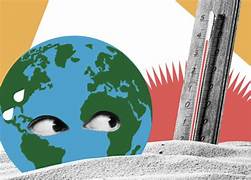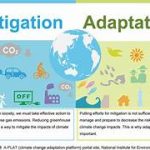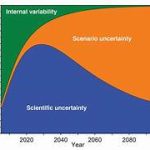Understanding the Basics of Global Warming
Global warming, a term that has become widely known in recent decades, refers to the long-term rise in Earth’s average surface temperature due to human activities. This phenomenon is a significant aspect of the broader issue of climate change, which encompasses changes not only in temperature but also in weather patterns, precipitation, and sea levels. While global warming is often discussed in the media and scientific circles, understanding its causes, consequences, and potential solutions is crucial for fostering awareness and addressing the challenges it presents. In this article, we will explore the basics of global warming—what it is, how it works, its effects, and the steps we can take to mitigate it.
What Is Global Warming?
Global warming refers to the increase in the Earth’s average surface temperature over time, primarily as a result of human activities. It is most notably driven by the accumulation of greenhouse gases in the atmosphere. These gases trap heat from the sun, preventing it from escaping back into space. This natural process is known as the “greenhouse effect,” which is essential for maintaining life on Earth. Without the greenhouse effect, the planet would be too cold to support life.
However, the current issue is that human activity, particularly the burning of fossil fuels (such as coal, oil, and natural gas), deforestation, and industrial practices, has significantly increased the concentration of these greenhouse gases, thereby intensifying the greenhouse effect. As a result, Earth’s temperature has been rising at an accelerated pace over the past century, and this has serious implications for the planet’s ecosystems and human societies.
The Greenhouse Effect: A Closer Look
The greenhouse effect works like a blanket around the Earth, allowing sunlight to reach the surface and warm it. Some of this energy is then radiated back toward space in the form of infrared radiation. However, certain gases in the Earth’s atmosphere, known as greenhouse gases (GHGs), trap a portion of this outgoing energy, keeping the planet warmer than it would be if the heat were allowed to escape freely.
Key greenhouse gases include:
- Carbon Dioxide (CO₂): The most significant greenhouse gas produced by human activities. It is primarily released through the burning of fossil fuels for energy, transportation, and industry, as well as through deforestation.
- Methane (CH₄): A potent greenhouse gas released during the production and transport of coal, oil, and natural gas, as well as from agriculture (particularly livestock) and landfills.
- Nitrous Oxide (N₂O): Emitted from agricultural and industrial activities, particularly the use of synthetic fertilizers.
- Water Vapor (H₂O): The most abundant greenhouse gas in the atmosphere, but its concentration is largely controlled by temperature, meaning it amplifies the effects of other greenhouse gases.
- Fluorinated Gases: A group of synthetic gases used in industrial applications, such as refrigeration and air conditioning, that have a much higher warming potential than CO₂ but are present in smaller quantities.
As human activities increase the concentration of these gases, the amount of heat trapped in the atmosphere increases, causing global temperatures to rise.
Causes of Global Warming
The primary cause of global warming is the increase in greenhouse gas emissions due to human activities. These activities have accelerated since the Industrial Revolution, with fossil fuel consumption playing a central role. Here are the main contributors:
- Burning of Fossil Fuels: The combustion of coal, oil, and natural gas for electricity, heat, and transportation is the largest source of anthropogenic (human-caused) CO₂ emissions. Power plants, vehicles, and industrial processes release vast amounts of CO₂ into the atmosphere, contributing significantly to the warming of the planet.
- Deforestation and Land Use Changes: Forests play a crucial role in regulating the Earth’s climate by absorbing CO₂ during photosynthesis. However, widespread deforestation—often to clear land for agriculture, urban development, or logging—reduces the Earth’s ability to absorb carbon dioxide, further exacerbating the greenhouse effect.
- Agriculture and Livestock Farming: Agriculture is a major source of greenhouse gas emissions, primarily methane and nitrous oxide. Livestock, such as cows and sheep, produce methane during digestion, and agricultural practices, such as the use of fertilizers, release nitrous oxide into the atmosphere.
- Waste Management: Landfills and waste treatment facilities release methane as organic waste decomposes. Improper waste management practices further contribute to the buildup of greenhouse gases in the atmosphere.
- Industrial Processes: Many industrial processes, such as cement production, steel manufacturing, and chemical production, generate large amounts of CO₂ and other greenhouse gases. These emissions are often released directly into the atmosphere during production.
Consequences of Global Warming
The effects of global warming are wide-ranging and touch every aspect of life on Earth. Some of the most significant impacts include:
- Rising Temperatures: Global warming has caused an overall increase in Earth’s average surface temperature. This has led to more frequent and intense heatwaves, especially in regions that are already warm. Extreme temperatures can harm human health, agriculture, and biodiversity.
- Melting Ice Caps and Glaciers: Rising temperatures have caused polar ice caps and glaciers to melt at an accelerated rate. This not only contributes to rising sea levels but also threatens ecosystems that depend on ice, such as polar bears and seals.
- Rising Sea Levels: The melting of ice contributes to rising sea levels, while thermal expansion (the tendency for water to expand as it warms) also plays a role. Rising sea levels threaten low-lying coastal areas, putting millions of people at risk of flooding and displacement. Cities like Miami, New York, and Jakarta are particularly vulnerable to sea-level rise.
- Extreme Weather Events: Global warming is increasing the frequency and intensity of extreme weather events such as hurricanes, typhoons, droughts, and heavy rainfall. These events cause destruction of infrastructure, loss of life, and disruption to agricultural systems. Wildfires, fueled by dry conditions, have become more common and severe in regions like California and Australia.
- Impact on Ecosystems and Biodiversity: Rising temperatures and changing precipitation patterns disrupt ecosystems and the species that inhabit them. Many species are unable to adapt quickly enough to these changes, leading to shifts in habitats, loss of biodiversity, and the extinction of vulnerable species.
- Agricultural Disruption: Shifting weather patterns, droughts, and unpredictable rainfall negatively impact food production. Crops that were once grown in specific climates may become unviable as conditions change. This can lead to food shortages and increased prices, affecting global food security.
- Threats to Human Health: Warmer temperatures can have direct health impacts, such as increased heat-related illnesses and deaths. Additionally, the spread of vector-borne diseases like malaria, dengue fever, and Lyme disease is exacerbated by warmer temperatures and changing precipitation patterns. Poor air quality, resulting from increased temperatures and pollution, also leads to respiratory problems, especially in urban areas.
What Can Be Done to Combat Global Warming?
Combating global warming requires both mitigation and adaptation strategies. Mitigation focuses on reducing the amount of greenhouse gases in the atmosphere, while adaptation involves preparing for and responding to the changes that are already underway.
- Reducing Greenhouse Gas Emissions: The most direct approach to mitigating global warming is reducing the emissions of greenhouse gases. This can be done by transitioning to renewable energy sources, such as solar, wind, and hydropower, which do not release carbon dioxide. Additionally, energy efficiency measures—such as better insulation for buildings, more efficient transportation, and reducing waste—can help reduce overall emissions.
- Promoting Reforestation and Protecting Forests: Planting trees and protecting existing forests can help absorb carbon dioxide from the atmosphere. Reforestation initiatives, along with better land-use practices, can help restore ecosystems and increase the planet’s ability to store carbon.
- Adopting Sustainable Agriculture: Shifting toward more sustainable agricultural practices, such as regenerative farming, reduces emissions and increases carbon sequestration in soils. Reducing food waste and promoting plant-based diets can also significantly lower the carbon footprint of agriculture.
- Implementing Carbon Pricing: Policies such as carbon taxes or cap-and-trade systems incentivize businesses to reduce their carbon emissions by attaching a cost to carbon pollution. This provides a financial incentive for companies to innovate and adopt cleaner technologies.
- Supporting Climate Research and Innovation: Research into new technologies, such as carbon capture and storage (CCS) and geoengineering, offers potential solutions to mitigate the effects of global warming. Continued investment in clean energy technologies and energy storage will also be essential for reducing reliance on fossil fuels.
- International Cooperation: Global warming is a global issue, and addressing it requires cooperation between countries. International agreements, such as the Paris Agreement, aim to limit global temperature rise by committing countries to reducing their greenhouse gas emissions. Effective global cooperation is key to achieving the necessary reductions to prevent catastrophic climate impacts.
Conclusion
Global warming is one of the most urgent challenges facing humanity today. Its causes are rooted in human activities, particularly the burning of fossil fuels, deforestation, and industrial practices. The consequences of global warming—rising temperatures, extreme weather, melting ice, and disrupted ecosystems—are already being felt around the world. However, through concerted efforts to reduce greenhouse gas emissions, promote sustainable practices, and adapt to the changing climate, we can mitigate the worst effects of global warming and build a more resilient and sustainable future for generations to come. By understanding the basics of global warming, we can better appreciate the importance of action and the role each of us plays in safeguarding the planet’s future.


